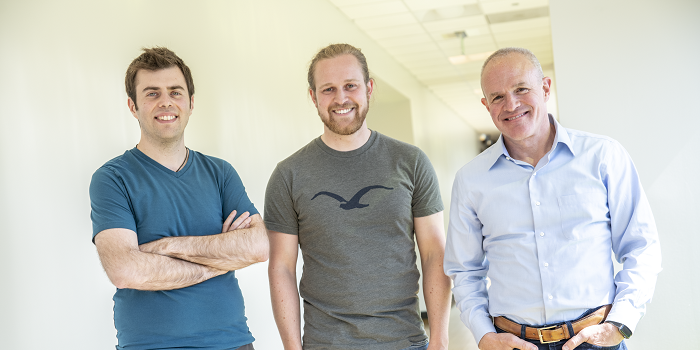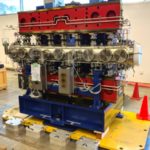Karen Davies, a staff scientist in the Molecular Biophysics and Integrated Bioimaging (MBIB) Division, is one of six Berkeley Lab scientists selected by the U.S. Department of Energy’s Office of Science to receive significant funding through its Early Career Research Program. The scientists are each expected to receive grants of up to $2.5 million over five years to cover year-round salary plus research expenses. Davies’ focus is on protein structure and bioenergetics, which includes the study of the flow of energy in living organisms. Her award is for “Structure of the Cyanobacterial NAD(P)H Dehydrogenase Complex (NDH-1) and Its Role in Cyclic Electron Flow and Carbon Dioxide Hydration,” selected by the Office of Basic Energy Sciences.
Cynthia McMurray Quoted in Nature Outlook on Huntington’s Disease
Biosciences’ Cynthia McMurray was recently quoted in a Nature Outlook article on the gaps in our understanding of the biology that underlies Huntington’s disease. In the piece, McMurray, a senior scientist in Molecular Biophysics and Integrated Bioimaging (MBIB), discusses possible mechanisms that give rise to the abnormal expansion of the DNA sequence cytosine, adenine, and guanine (CAG), potential functions of the huntingtin protein in cells, and the theory that chains of glutamine (encoded by CAG) make huntingtin extra sticky.
View the article as a PDF.
Faster, Cheaper, Better: A New Way to Synthesize DNA
Breakthrough discovery at the Joint BioEnergy Institute could greatly accelerate the pace of science
 In the rapidly growing field of synthetic biology, in which organisms can be engineered to do things like decompose plastic and manufacture biofuels and medicines, production of custom DNA sequences is a fundamental tool for scientific discovery. Yet the process of DNA synthesis, which has remained virtually unchanged for more than 40 years, can be slow and unreliable.
In the rapidly growing field of synthetic biology, in which organisms can be engineered to do things like decompose plastic and manufacture biofuels and medicines, production of custom DNA sequences is a fundamental tool for scientific discovery. Yet the process of DNA synthesis, which has remained virtually unchanged for more than 40 years, can be slow and unreliable.
Now in what could address a critical bottleneck in biology research, researchers at the Joint BioEnergy Institute (JBEI), announced they have pioneered a new way to synthesize DNA sequences through a creative use of enzymes that promises to be faster, cheaper, and more accurate. The discovery, led by JBEI graduate students Sebastian Palluk and Daniel Arlow, was published in Nature Biotechnology in a paper titled “De novo DNA Synthesis Using Polymerase-Nucleotide Conjugates.” Read the Berkeley Lab News Center feature story.
ALS Welcomes Leda Insertion Device for Gemini Beamline
A critical component of the planned state-of-the-art macromolecular crystallography beamline Gemini has arrived at the Lab. The specially-designed in-vacuum undulator insertion device will yield higher photon flux compared to the Advanced Light Source’s superbend magnet and wiggler sources, bringing solutions to some of the most challenging projects in structural biology within reach.
JGI Helps Build Sphagnum Genomic Resources
Sphagnum’s impact on global carbon cycling and climate is estimated to be larger than any other single plant genus. Researchers estimate a quarter of the world’s terrestrial carbon is stored in peatlands, which make up nearly 3 percent of the earth’s land surface. Through two separate proposals enabled by the JGI’s Community Science Program (CSP), researchers at Oak Ridge National Laboratory and at the University of Vienna are developing a number of resources to build up Sphagnum as a plant model system focused on carbon cycling studies. Learn more on the JGI’s website.
- « Previous Page
- 1
- …
- 119
- 120
- 121
- 122
- 123
- …
- 213
- Next Page »
Was this page useful?








